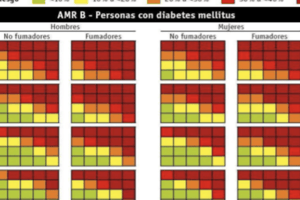Podcast
Questions and Answers
Which of the following pooled investment shares is least likely to trade at a price different from its NAV?
Which of the following pooled investment shares is least likely to trade at a price different from its NAV?
- Exchange-traded fund shares.
- Closed-end mutual fund shares.
- Open-end mutual fund shares. (correct)
Promised payments to pension beneficiaries are a responsibility of the plan sponsor in:
Promised payments to pension beneficiaries are a responsibility of the plan sponsor in:
- both a defined benefit plan and a defined contribution plan.
- a defined benefit plan only. (correct)
- a defined contribution plan only.
Which of the following statements about active and passive asset management is most accurate?
Which of the following statements about active and passive asset management is most accurate?
- Passive management’s share of industry revenues is smaller than its share of assets under management. (correct)
- Active management has been gaining market share over time versus passive management.
- Active management may use fundamental analysis, technical analysis, or a “smart beta” approach to outperform a chosen benchmark.
In the top-down approach to asset allocation, industry analysis should be conducted before company analysis because:
In the top-down approach to asset allocation, industry analysis should be conducted before company analysis because:
A pooled investment with a share price significantly different from its net asset value (NAV) per share is most likely a(n):
A pooled investment with a share price significantly different from its net asset value (NAV) per share is most likely a(n):
The execution step in the portfolio management process is most likely to include:
The execution step in the portfolio management process is most likely to include:
Which of the following types of investors is likely to have the shortest investment horizon?
Which of the following types of investors is likely to have the shortest investment horizon?
In a defined contribution pension plan, investment risk is borne by the:
In a defined contribution pension plan, investment risk is borne by the:
The ratio of an equally weighted portfolio's standard deviation of return to the average standard deviation of the securities in the portfolio is known as the:
The ratio of an equally weighted portfolio's standard deviation of return to the average standard deviation of the securities in the portfolio is known as the:
Which of the following institutional investors is most likely to have low liquidity needs?
Which of the following institutional investors is most likely to have low liquidity needs?
Which of the following actions is best described as taking place in the execution step of the portfolio management process?
Which of the following actions is best described as taking place in the execution step of the portfolio management process?
The investment needs of a property and casualty insurance company are most likely different from the investment needs of a life insurance company with respect to:
The investment needs of a property and casualty insurance company are most likely different from the investment needs of a life insurance company with respect to:
The portfolio approach to investing is best described as evaluating each potential investment based on its:
The portfolio approach to investing is best described as evaluating each potential investment based on its:
Identifying a benchmark for a client portfolio is most likely to be part of the:
Identifying a benchmark for a client portfolio is most likely to be part of the:
High risk tolerance, a long investment horizon, and low liquidity needs are most likely to characterize the investment needs of a(n):
High risk tolerance, a long investment horizon, and low liquidity needs are most likely to characterize the investment needs of a(n):
Which of the following pooled investments is least likely to employ large amounts of leverage?
Which of the following pooled investments is least likely to employ large amounts of leverage?
In a defined contribution pension plan, investment risk is borne by the:
In a defined contribution pension plan, investment risk is borne by the:
In the Markowitz framework, an investor should most appropriately evaluate a potential investment based on its:
In the Markowitz framework, an investor should most appropriately evaluate a potential investment based on its:
Endowments and foundations typically have investment needs that can be characterized as:
Endowments and foundations typically have investment needs that can be characterized as:
Which of the following is typically the first general step in the portfolio management process?
Which of the following is typically the first general step in the portfolio management process?
The top-down analysis approach is most likely to be employed in which step of the portfolio management process?
The top-down analysis approach is most likely to be employed in which step of the portfolio management process?
A pooled investment fund buys all the shares of a publicly traded company. The fund reorganizes the company and replaces its management team. Three years later, the fund exits the investment through an initial public offering of the company's shares. This pooled investment fund is best described as a(n):
A pooled investment fund buys all the shares of a publicly traded company. The fund reorganizes the company and replaces its management team. Three years later, the fund exits the investment through an initial public offering of the company's shares. This pooled investment fund is best described as a(n):
A mutual fund that invests in short-term debt securities and maintains a net asset value of $1.00 per share is best described as a:
A mutual fund that invests in short-term debt securities and maintains a net asset value of $1.00 per share is best described as a:
Open-end mutual funds differ from closed-end funds in that:
Open-end mutual funds differ from closed-end funds in that:
Which of the following would be assessed first in a top-down valuation approach?
Which of the following would be assessed first in a top-down valuation approach?
In a defined benefit pension plan:
In a defined benefit pension plan:
MAL Investments is an asset management company that consists of three subsidiaries: one that focuses on mid-cap value stocks, one that focuses on alternative assets, and one that focuses on long-term emerging market sovereign debt. MAL is most accurately described as a:
MAL Investments is an asset management company that consists of three subsidiaries: one that focuses on mid-cap value stocks, one that focuses on alternative assets, and one that focuses on long-term emerging market sovereign debt. MAL is most accurately described as a:
Flashcards
Open-end fund shares pricing
Open-end fund shares pricing
Shares trade at NAV; others may deviate.
Defined benefit plan liability
Defined benefit plan liability
Plan sponsor's responsibility to make promised payments.
Passive vs. active revenue
Passive vs. active revenue
Passive management industry revenue share is smaller.
Top-down industry analysis
Top-down industry analysis
Signup and view all the flashcards
Closed-end fund pricing
Closed-end fund pricing
Signup and view all the flashcards
Portfolio management execution
Portfolio management execution
Signup and view all the flashcards
Shortest investment horizon
Shortest investment horizon
Signup and view all the flashcards
Who bears investment risk?
Who bears investment risk?
Signup and view all the flashcards
Portfolio risk measure
Portfolio risk measure
Signup and view all the flashcards
Low liquidity needs
Low liquidity needs
Signup and view all the flashcards
Execution step action
Execution step action
Signup and view all the flashcards
Investment need differences
Investment need differences
Signup and view all the flashcards
Portfolio approach to investing
Portfolio approach to investing
Signup and view all the flashcards
Benchmark identification timing
Benchmark identification timing
Signup and view all the flashcards
Investment needs characteristics
Investment needs characteristics
Signup and view all the flashcards
Least amount of leverage
Least amount of leverage
Signup and view all the flashcards
Who bears investment risk
Who bears investment risk
Signup and view all the flashcards
Markowitz framework
Markowitz framework
Signup and view all the flashcards
Foundation investment needs
Foundation investment needs
Signup and view all the flashcards
First portfolio step
First portfolio step
Signup and view all the flashcards
Study Notes
Question 1
- Open-end mutual fund shares are least likely to trade at a price different from their Net Asset Value (NAV).
- Exchange-traded funds and closed-end mutual funds can deviate from their NAV.
- Open-end mutual funds trade at NAV.
Question 2
- In a defined benefit plan, the plan sponsor is responsible for promised payments to pension beneficiaries.
- Defined contribution plans do not promise fixed payments to beneficiaries.
Question 3
- Passive management represents a smaller share of industry revenues than its share of assets under management.
- Passive management has been gaining market share over time versus active management.
- Smart beta is a passive management strategy focusing on a specific market risk factor.
- Passive management has lower fees compared to active management.
Question 4
- In the top-down approach to asset allocation, industry analysis should precede company analysis.
- An industry's prospects in the global business environment is a determinant of the success of individual firms.
- The goal is to identify the best companies in the most promising industries.
Question 5
- A pooled investment with a share price significantly different from its NAV is most likely a closed-end fund.
- Closed-end funds' share prices can differ significantly from their NAVs.
- Open-end fund shares can be purchased and redeemed at their NAVs.
- Market forces keep exchange-traded fund share prices close to their NAVs, and arbitrageurs can profit by trading when there are differences.
Question 6
- The execution step in portfolio management includes asset allocation and security analysis.
- Portfolio construction is also a component of the execution step.
- Preparation of an investment policy statement is part of the planning step.
- Portfolio monitoring, rebalancing, performance measurement, and reporting are part of the feedback step.
Question 7
- Property and casualty insurance companies are likely to have the shortest investment horizon.
- Foundations and life insurance companies have long investment horizons.
- Property and casualty insurers have shorter horizons due to claims occurring sooner.
Question 8
- In a defined contribution plan, the employee bears the investment risk.
- Employees make the investment decisions and assume the investment risk in a defined contribution plan.
Question 9
- The diversification ratio is the ratio of an equally weighted portfolio's standard deviation of return to the average standard deviation of the securities in the portfolio.
- The average standard deviation of portfolio securities is calculated over the historical measurement period.
Question 10
- Defined benefit pension plans are most likely to have low liquidity needs.
- Banks and property/casualty insurers need higher liquidity.
- Banks require liquidity for depositor withdrawals.
- Property/casualty insurers need liquidity to meet claims.
Question 11
- Choosing a target asset allocation occurs during the execution step of portfolio management.
- The planning step includes evaluating the investor's needs and preparing an investment policy statement.
- Measuring and reporting performance and monitoring and rebalancing the portfolio are part of the feedback step.
Question 12
- Property and casualty insurance companies' investment needs differ from life insurance companies regarding the time horizon.
- Property and casualty insurers have shorter investment horizons.
- Both have low risk tolerance and high liquidity needs.
Question 13
- The portfolio approach to investing evaluates each potential investment based on its contribution to the investor's overall risk and return.
- It does not evaluate investments on a standalone basis by analyzing fundamentals or potential to generate excess return.
Question 14
- Identifying a benchmark for a client portfolio is part of the planning step.
- The benchmark allows for assessing performance in the feedback step.
Question 15
- High risk tolerance, a long investment horizon, and low liquidity needs characterize a defined benefit pension plan.
- Insurance companies and banks have low-risk tolerance and high liquidity needs.
- Banks and property/casualty insurers have short investment horizons.
Question 16
- Venture capital funds are least likely to employ large amounts of leverage.
- Hedge funds and buyout firms use high leverage to acquire assets.
- Venture capital involves an equity interest.
Question 17
- In a defined contribution pension plan, the employee bears the investment risk.
- The plan sponsor makes payments to retirement accounts, and investment risk is borne by employees.
Question 18
- In the Markowitz framework, an investor should evaluate a potential investment based on its effect on portfolio risk and return.
- Modern portfolio theory suggests considering how investments affect the risk and return characteristics of the investor's portfolio.
Question 19
- Endowments and foundations typically have long time horizons, low liquidity needs, and high-risk tolerance.
- They invest for the long term to fund a charitable cause and have low cash payout rates.
Question 20
- Writing a policy statement is typically the first step in the portfolio management process.
- Risk and return are integrated to determine investor's goals and constraints within the policy statement, serving as the foundation.
Question 21
- The top-down analysis approach is employed in the execution step of the portfolio management process for selecting securities.
Question 22
- A private equity fund acquires public companies, takes them private, and reorganizes them.
- An event-driven fund invests in response to corporate events.
- Venture capital funds invest in start-up companies.
Question 23
- A money market fund invests in short-term debt and maintains a $1.00 NAV per share.
- Bond mutual funds invest in longer-maturity securities.
- Balanced funds invest in both debt and equity.
Question 24
- Open-end funds stand ready to redeem their shares, unlike closed-end funds.
- Open-end funds redeem existing shares or issue new shares based on demand.
- Closed-end funds have a fixed number of shares that trade on exchanges.
Question 25
- Fiscal policy is assessed first in a top-down valuation approach.
- The investor should analyze macroeconomic influences first, which includes fiscal policy. Then, industry and company influences.
Question 26
- In a defined benefit plan, the employee is promised a periodic payment upon retirement.
- The employer contributes to an investment trust to meet the pension obligation.
- Employees do not direct investments.
Question 27
- MAL Investments is a multi-boutique firm as it is a holding company with different specialist asset managers.
- Each subsidiary focuses on different assets.
Studying That Suits You
Use AI to generate personalized quizzes and flashcards to suit your learning preferences.




